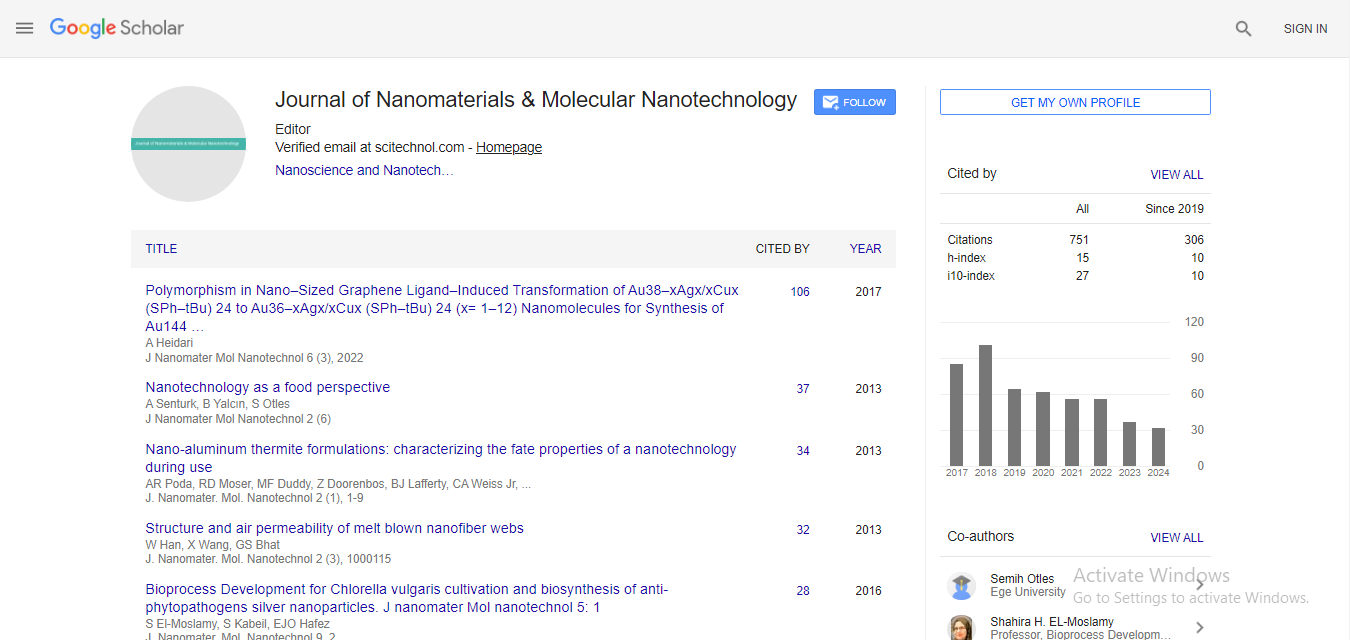Review Article, J Nanomater Mol Nanotechnol S Vol: 0 Issue: 1
Functionalization and Solubilization of Graphene
| A Govindaraj1,2 and CNR Rao1,2* | |
| 1Chemistry and Physics of Materials Unit, New Chemistry Unit and CSIR Centre of Excellence in Chemistry, Jawaharlal Nehru Centre for Advanced Scientific Research, Jakkur P.O., Bangalore, India | |
| 2Solid State and Structural Chemistry Unit, Indian Institute of Science,Bangalore, India | |
| Corresponding author : Dr. Rao CNR Chemistry and Physics of Materials Unit, New Chemistry Unit and CSIR Centre of Excellence in Chemistry, Jawaharlal Nehru Centre for Advanced Scientific Research, Jakkur P.O., Bangalore-560064, India Tel: + 91 (80) 23653075; Fax: + 91 (80) 22082760 E-mail: cnrrao@jncasr.ac.in |
|
| Received: September 24, 2013 Accepted: March 03, 2014 Published: March 07, 2014 | |
| Citation: Govindaraj A, Rao CNR (2014) Functionalization and Solubilization of Graphene. J Nanomater Mol Nanotechnol S1:005. doi:10.4172/2324-8777.S1-005 |
Abstract
Functionalization and Solubilization of Graphene
A variety of nanostructures of carbon and inorganic nanomaterials possessing different dimensionalities have been synthesized and characterized in the last few years. Several of these nanostructures are found to have properties of utility with potential applications. Using the nanostructures in many situations requires their dispersions in suitable solvents. This can be done in most instances by appropriate functionalization of the nanostructures. In this contribution, we provide an account of the covalent and non-covalent methods of functionalization of carbon /graphene nanostructures and their subsequent solubilization in non-polar, polar and aqueous media. Of perticular interest are the methods of covalent functionalization such as amidation which are of general applicability. Methods of noncovalent functionalization described here can be used with nanotubes and other nanomaterials and are specially useful since the electronic structure of graphene is not affected by this process.
 Spanish
Spanish  Chinese
Chinese  Russian
Russian  German
German  French
French  Japanese
Japanese  Portuguese
Portuguese  Hindi
Hindi 



